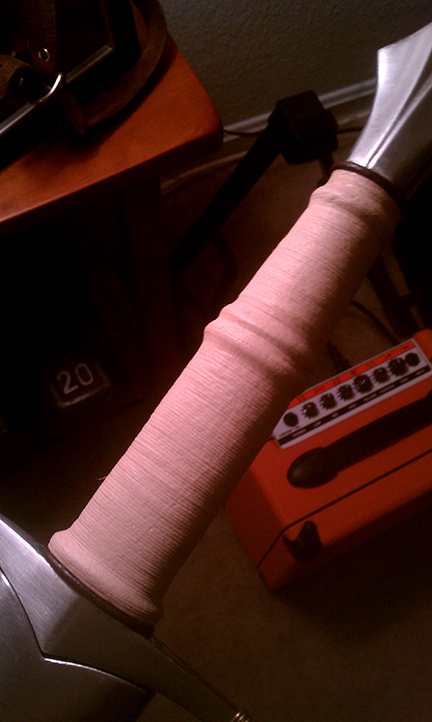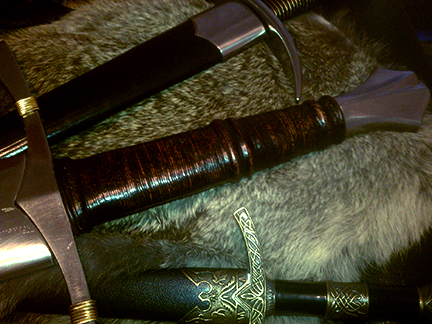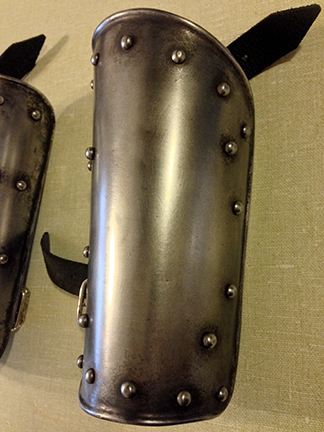I'm currently researching steel blunt swords for training, and after having read the countless wonderful reviews at this site, I still have a few questions that I'd be greatly appreciative of any insight anyone might have to offer.
SIZE
Which is more important: a longer blade length that compensates for a shorter reach, or a shorter length that makes sheathing/unsheathing easier? I ask because when unsheathing an Italian longsword with a 35.5" blade, my shoulder always pops at the last inch or so (I'm 5'6").
TYPE
I'm a guitarist, so the adrenaline pumping desire of wanting every piece of gear you see is not new to me, but in this instance it's compounded with my ignorance...I've limited my choices down to a few pieces from Ablion and Arms & Armor:
Ablion
The Liechtenauer
Arms & Armor
The Fechterspiel
The Spada da Zogho
Granted, everyone is different and the choice of a sword comes down to personal choice and intention of use, so it's impossible to expect a worthwhile "THIS one will be PERFECT for YOU" answer, but I'd love to hear anyone's thoughts on these swords outside of any singular review.
Do you find that having the schilt is a requirement for training, or are its benefits negligible in comparison to a better built, schilt-less sword? I'll fully admit that I'm hesitant to grab a sword with a schilt (right now, anyway) due solely to aesthetics - I can only afford one new sword right now, so having one that I can train with, and also use for upcoming cosplay photography/display sessions without the sword obviously being a trainer is something I'm considering. That being said, safety and quality of training is FAR more important, so it's good to know how the existence of a schilt on a sword affects those attributes.
MODIFICATIONS
I don't think I'm a fan of the bare hemp chord on the Ablion swords, and find the Arms and Armor hilts to be uninspired (I'm a graphic artist, so these things matter to me, ha). Are these swords made such that one can rewrap them and add/remove risers without sacrificing anything and/or do training schools frown on modifying your training sword hilts?
I do have experience with rewrapping hilts and repositioning risers, after doing so on my italian long sword:


Thanks for any advice and input. It's greatly appreciated! Oh, and so this post is more than just "help me!", here's a couple other things I've done that hopefully you'll enjoy :)
This was a brand new, shiny bracer, until I aged it.

This is a sword frog I made.
